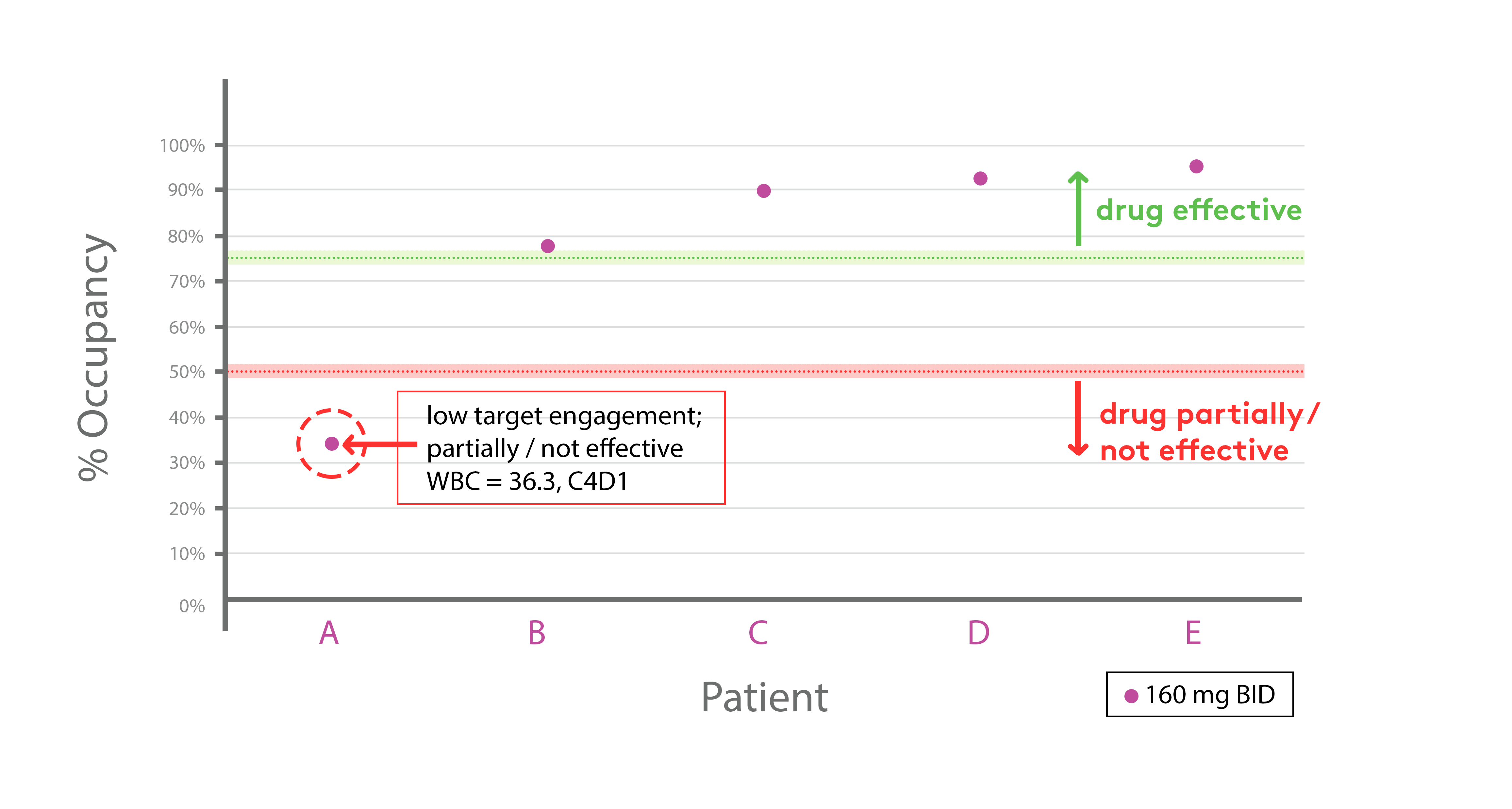A new personalized therapeutics to determine drug target engagement, dose levels, and dose frequency in order to improve efficacy, safety and outcome for Leukemia and non-Hodgkin Lymphoma patients.

As new treatments for Leukemia and non-Hodgkin Lymphoma evolve every day, Precision Personalized Therapeutics (PPT) was developed with the individual patient’s needs in mind. Especially tailored for but not limited to patients who don’t fit the “standardized dosages” mold suggested by pharmaceuticals, PPT prioritizes an individual’s susceptibility to side effects that may potentially emerge from a normalized treatment. By determining percent/type BTK mutation and percent drug occupancy, PPT anticipates and advises appropriate medication through precise dosages that can minimize drug toxicity while maximizing drug efficacy. Furthermore, optimized treatments may introduce drug cost saving benefits.
This is our aim with PPT. Physicians will be better informed to prescribe each individual the most appropriate treatment. Patients will benefit exponentially more from said tailored treatment. And costs will be further reduced for insurance companies.
Understanding Bruton’s Tyrosine Kinase (BTK)
Bruton’s Tyrosine Kinase (BTK), located in white blood cells, is a protein that plays a crucial role in fighting infection and regulating B cell proliferation.
For Leukemia and non-Hodgkin Lymphoma patients however, there exists three major mutations sites in BTK (C481S, L528W, T474I) that occur that cause an over excess of kinase activity–highlighting BTK as a leading drug target for many cancer therapies (i.e. Ibrutinib, Acalabrutinib…etc). However, such BTK inhibitors are not entirely selective for just BTK and off-target effects are often associated with well-recognized toxicities such as atrial fibrillation, infection, pneumonitis, bleeding, and arthralgia.

White bloods cells in Leukemia &
non-Hodgkin Lymphoma patients
To minimize off-target effects, Nextcea is dedicated to drug efficacy and safety by determining percentage of protein mutation and percentage of drug occupancy towards BTK.
Nextcea analyzes if BTK in cancer cells is mutated and to what percent extent
Since DNA mutation doesn’t necessarily always translate into protein mutation, contrary to prognosis of DNA by fluorescence in situ hybridization (FISH), Nextcea is instead focused on and is capable of determining if protein is mutated and if so, to what extent–a far more appropriate approach when discussing drug treatment. Percentage mutation of the BTK protein can significantly impact the selection of covalently and/or non-covalently BTK bound drugs.
For instance, in Figure 1, the study shows Patient A with 78.1% mutated cancer cells, and 21.9% normal & non-mutated cancer cells. Since BTK bound drugs will only be effective on normal & non-mutated cancer cells, even if the drug achieves 100% occupancy, the drug will only be 21.9% effective on Patient A.

Since each patient has varying degrees of mutation, by knowing the percent mutation he/she possesses with PPT, physicians can prescribe dosages far more accurately that will benefit the patient.
Determining percent drug occupancy on BTK C481 in normal and non-mutated cancer cells at Nextcea
By determining drug target engagement, Nextcea is able to aid in drug efficacy by seeing if patients are receiving full benefits from the drug.

or in drug safety by seeing if patients already have good target engagement and higher doses are not needed, reducing the risks of off-target effects and lowering drug costs.


